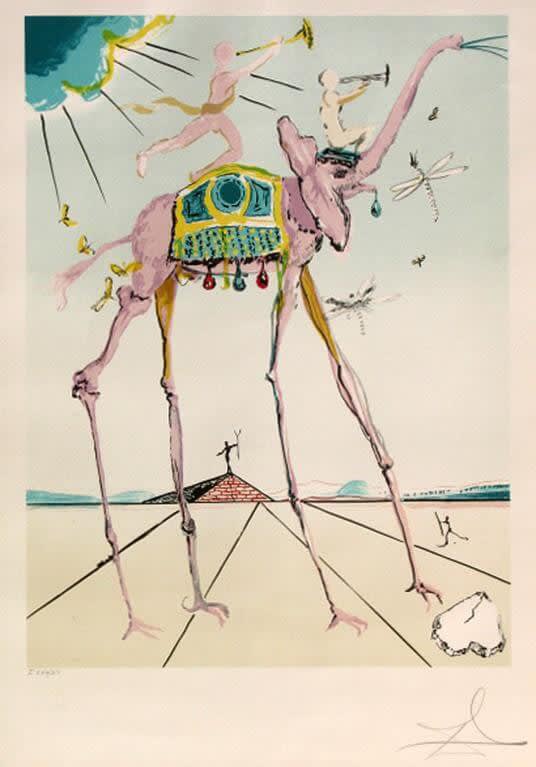If someday I may die, though it is unlikely, I hope the people in the cafés will say, 'Dalí has died, though not entirely. - Salvador Dali
Dali Lives in St. Pete
Salvador Dali will greet you, talk to you, take a selfie with you and even text it to you.
The extraordinary exhibit, Dali Lives, at the Dali Museum in St. Petersburg, uses Artificial Intelligence that allows visitors to have life-like interactions with the artist. He walks, he talks and, as he was before his death thirty years ago, Dali, even artificially, is larger than life.
The exhibit uses Dali's own words to explain himself and his art, and also present-day messages to help educate visitors about the artist's life and work. Interacting with Dali takes viewing his art to a new level, more personal and, hopefully, more meaningful, for visitors. The exhibit will be on display through December 31, 2029.
Salvador Dali's Elephants
Sigmund Freud was a hero to Dali, and to many of the other Surrealist painters, who read his radical works, about the unconscious mins, dreams and sexuality, with great zeal. Freud, who was partial to the Old Masters and more traditional works of art, was not very impressed by the surrealists. He had a very unpleasant meeting in the 1920s Andre Breton, writer and leader of the Surrealist movement, who showed up unannounced on Freud's doorstep and received a less-than-warm welcome.
Dali tried, unsuccessfully, to meet Freud when he was living in Vienna. The two finally met in 1938 in London, to where Freud fled to escape the Nazis.
Freud was 81, Dali just 34 when they met, both very successful. Dali didn't get the accolades he'd hoped for during the meeting, but Freud was not as unimpressed as Dali feared.
After the meeting, Freud wrote, to the mutual friend who arranged the meeting, "I really have reason to thank you for the introduction which brought me yesterday's visitors. For until then I was inclined to look upon the surrealists - who have apparently chosen me as their patron saint - as absolute (let us say 95 percent, like alcohol), cranks. That young Spaniard, however, with his candid and fanatical eyes, and his undeniable technical mastery, has made me reconsider my opinion."
Freud's writings may have seemed, to Dali, to give legitimacy to his work. Dali's symbols, his pairing of many symbols in his dream-like paintings, are open to interpretation…the interpretation of the dreamer and the viewer.
The elephant symbolizes good fortune, strength, even fertility in some cultures. Dali's elephants have spindly legs and almost appear to be in flight, although their feet, which are more like bird's than elephant's, are anchored to the earth. In some paintings they carry an obelisk, after Gian Bernini's 1667 marble statue in the Piazza della Minerva in Rome.
Dali titled his 1979 lithograph, available at VFA, Celestial Elephant, surrounding it with other recurring symbols…a pyramid, a figure holding a crutch, a pair of dragonflies. Like all of Dali's works, it is fascinating…and open to interpretation.
Dali's elephants are so powerful and recognizable, that in a new animated film, about Dali's friend, collaborator and rival, surrealist filmmaker Luis Bunuel, Dali's elephants can be seen parading through the streets. Dali appears in the film, as well.
Buñuel in the Labyrinth of the Turtles is about Bunuel's experience filming Las Hurdes: Tierra Sin Pan (Land Without Bread) in the poverty stricken Las Hurdes mountains in Spain in 1933. The film is set to be released on August 16, 2019.
The Works of Salvador Dali at VFA
Please contact us if you would like more information about Celestial Elephant, or any of the other work by Salvador Dali available at VFA.

